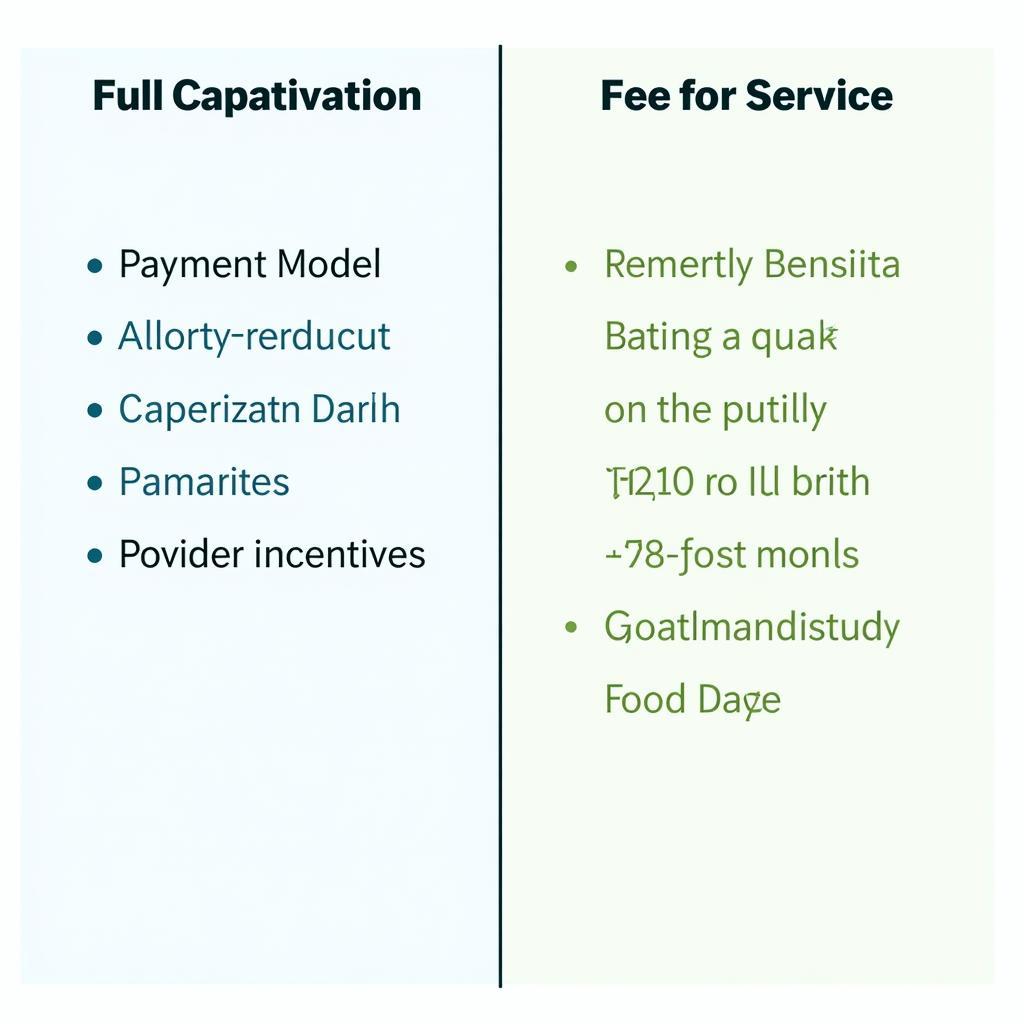Which Care Is Better: Full Capitation or Fee for Service?
When navigating the complex world of healthcare, understanding the different payment models is crucial for both patients and providers. Two common approaches are full capitation and fee for service. Each model comes with its own set of advantages and disadvantages, impacting costs, care delivery, and overall patient experience.
Understanding Fee for Service
Fee for service (FFS) is a traditional healthcare payment model where providers bill separately for each service rendered. This can include doctor’s visits, diagnostic tests, procedures, and treatments.
How it works: Imagine visiting your doctor for a check-up. Under FFS, the doctor would bill your insurance for the visit, any tests ordered, and any treatments provided. Each item or service has a specific price.
Pros:
- Transparency: Patients receive a detailed bill outlining all services received and their associated costs.
- Provider Autonomy: Physicians have more freedom in deciding treatments and ordering tests without external pressure.
Cons:
- Potential for Overutilization: Since providers are paid per service, there’s a risk of unnecessary procedures or tests being ordered to increase revenue.
- Administrative Burden: Managing individual bills for every service can be complex and time-consuming for both patients and providers.
Exploring Full Capitation
Full capitation takes a different approach. Instead of paying for each service, providers receive a fixed amount per patient for a specified period. This payment, known as a “capitation rate,” is determined based on factors like the patient’s age, health status, and the projected cost of their care.
How it works: Let’s say you’re enrolled in a health plan using full capitation. Your primary care physician receives a set amount each month, regardless of whether you see them once or multiple times.
Pros:
- Predictable Costs: Patients and insurers benefit from predictable healthcare expenses, making budgeting easier.
- Focus on Preventive Care: With a fixed budget, providers are incentivized to emphasize preventive care and keep patients healthy to avoid costly interventions.
Cons:
- Potential for Underutilization: If the capitation rate is too low, providers might hesitate to order necessary tests or treatments to stay within budget.
- Limited Choice: Patients may have fewer choices in providers if their preferred doctor isn’t part of the capitation agreement.
 Comparing Full Capitation and Fee for Service
Comparing Full Capitation and Fee for Service
Which Care Is Better?
The question of whether full capitation or fee for service is “better” doesn’t have a simple answer. The ideal choice depends on individual needs, healthcare goals, and the specific healthcare system.
Factors to Consider:
- Health Status: Patients with chronic conditions requiring frequent care might benefit from the predictability of capitation.
- Financial Situation: Individuals seeking greater control over healthcare costs and predictable expenses might prefer capitation.
- Importance of Provider Choice: Those who prioritize having a wide selection of doctors might lean towards fee for service.
Expert Insight:
“It’s crucial to remember that neither model is inherently superior,” says Dr. Emily Carter, a healthcare policy analyst. “The success of either system depends on careful implementation, appropriate risk adjustments, and a commitment to quality care from both providers and payers.”
Finding the Right Fit
Ultimately, the best way to determine which payment model aligns with your needs is to carefully research your options, compare plans, and consult with healthcare professionals.
Need Help Navigating the Healthcare Landscape?
CarServiceOnline offers a wealth of resources and expert guidance to help you make informed decisions about your car service needs. Contact us today via WhatsApp at +1(641)206-8880 or email us at [email protected] for 24/7 support.

